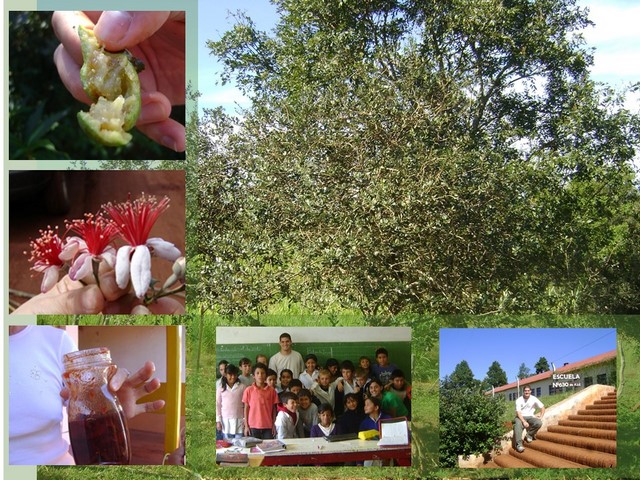Etnobotánica de Acca sellowiana (Myrtaceae): una especie de uso múltiple de Misiones, Argentina
DOI:
https://doi.org/10.30972/bon.3216366Palavras-chave:
Especie frutal, "guayaba de monte", usos tradicionalesResumo
Se dan a conocer resultados de una investigación sobre el vínculo entre los habitantes de Campo Viera, Misiones, Argentina, con la especie Acca sellowiana (O. Berg) Burret (Myrtaceae). Para ello se utilizaron metodologías de la etnobotánica cuali y cuantitativas: entrevistas-semiestructuradas, observación directa, y uso de estímulos visuales. Además se realizó un ranking de puntuación simple a niños de edad escolar, de una escuela rural ubicada en el área donde se encuentra la especie evaluada. Por último, se aplicaron los índices Valor de Diversidad Informante (VDI) y Valor de Diversidad de Uso (VDU). Los resultados demostraron la existencia de un vínculo entre las poblaciones locales y A. sellowiana, el cual no solo responde en términos utilitarios, sino también del tipo afectivo. Se distinguieron 4 categorías de uso principales: alimenticia, medicinal, combustible y ornamental, siendo la alimenticia la más mencionada (69%) a partir del consumo de frutos in situ y pétalos para la preparación de dulces y postres. Se destacó el conocimiento por parte de niños en edad escolar de la especie estudiada. Por último, se concluye que la presencia de la especie en la zona, y sus múltiples usos, hacen que se comporte como un recurso importante con potencial para generar alternativas de desarrollo local.Downloads
Não há dados estatísticos.

Downloads
Publicado
2022-12-28
Como Citar
Nuñez, M., Keller, H., & Pirondo, A. (2022). Etnobotánica de Acca sellowiana (Myrtaceae): una especie de uso múltiple de Misiones, Argentina. Bonplandia, 32(1), 27–37. https://doi.org/10.30972/bon.3216366
Edição
Seção
Artículos originales
Licença
Declaration of Adhesion to Open Access
- All contents of Bonplandia journal are available online, open to all and for free, before they are printed.
Copyright Notice
- Bonplandia magazine allows authors to retain their copyright without restrictions.
- The journal is under a Creative Commons Attribution 4.0 International license.














.jpg)


